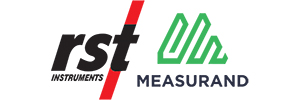Digitalisation offers enormous benefits to tailings dam operators but it is not without its challenges, according to Grant Taylor, Managing Director, UK for RST Instruments.
"The problem most of our customers are facing is moving from an analogue, manually-run mine into the new digital age. They get lots of data, but the data can become overwhelming," Taylor said in an interview for Mining Journal and Mining Magazine's 2021 Tailings Programme.
"Our goal is to help the project engineers and clients navigate through that data to get to actionable information so that they can make risk-based decisions based upon that information in an easy and efficient manner."
RST and sister company Measurand, operating together as RST/Measurand, specialise in geotechnical instrumentation for mines, tailings dams and other critical structures such as bridges, hydroelectric dams, railroads, airports, tunnels and highways. Both RST and Measurand were founded as sensor firms and have followed the market's progression into data collection. This has seen them develop a connectivity platform that collects and presents data to operators of critical structures in a usable manner and in real time.
One of the challenges of collecting data from tailings dams is the involvement of multiple instruments measuring multiple parameters, which can lead to data overload, which can lead to data overload, especially when incorporating new types of instrumentation into existing data workflows. These workflows may or may not incorporate manual or remote collection methods.
There are multiple kinds of instrumentation suited for tailings dam monitoring depending on the information a client is interested in gathering. For example, when it comes to measuring slope stability, RST/Measurand offers new technologies such as SAA (ShapeArray), which captures real-time deformation data vertically, horizontally or in an arc, and GAA (Geo-Acoustic Aware), a low-cost tool installed at shallow depths to allow for early warning of movement, as well as traditional in-place inclinometers and manual inclinometers.
Other solutions offered by RST/Measurand include a vibrating wire piezometer for measuring pore pressures in the ground, vibrating wire liquid settlement system for monitoring settlement or heave, and total earth pressure cells for measuring stress acting on plane surfaces.
"What we're aiming for is provide all that data in one place, so we can pull everything together. We have our own solution for that, but also appreciate the need of our clients to pull the data into their own on-site systems," Taylor said.
For this reason, RST/Measurand has developed a fully integrated API that enables the client to get that data onto their system if a turnkey solution isn't what they need.
"We very much provide the supervision of installation, the commissioning, we like to hold their hands through the process if that's what's required. You can spend a lot of money on a system but if it's not installed properly, not managed properly, that's money wasted," Taylor said.
Another common concern of operators is having the ability to continually monitor deformation throughout the process of raising downstream tailings dams, Taylor sai
"Every time you raise the dam, you're building over all the instruments you had before. This requires a new instrumentation program (at) more expense (and with) less continuity of data," Taylor said.
To solve this problem, Measurand recently developed SAAV Extend, a modular ShapeArray system that scales with a project's scope. When it is time to raise the tailings dam, SAAV Extend lift extension segments can be added between the top and base assemblies to increase the total sensorised length. This enables the operator to connect new sections onto the previously installed equipment, saving them the expense of re-drilling or buying a new full-length instrument and ensuring better data integrity through the process of the dam raise, according to Taylor.
Many different technologies are required to monitor a tailings dam and these do not all necessarily have to be provided by one solutions provider, Taylor acknowledged. He named a number of complementary technologies to those offered by RST/Measurand, such as environmental sensors for measuring waterflow, PH, and hydraulic conductivity.
He also said that technologies seemingly in competition with those offered by RST/Measurand - such as Lidar (Light Detection and Ranging), which can be used to detect movements of dam structures, and InSAR (Interferometric Synthetic Aperture Radar), a technique for mapping ground deformation using radar images of the Earth's surface that are collected from orbiting satellites - could actually be complementary.
"We are seeing a nice blend of companies being able to use the InSAR data to highlight historical areas of concern, more areas of movement that have recently occurred. The in-ground instrumentation (offered by RST/Measurand) can then be installed to provide a near real-time data that the InSAR does not provide."
"The integration is very much on the software level. Again, it can be pulled into our programme and visualisation solution or at the API level to pull our instrumentation into the InSAR provider's visualization.
As for LIDAR, he said RST/Measurand was working with industry partners to integrate this technology into its own system, "just to make sure we collaborate and really give the client what they want from a monitoring system."
ABOUT THIS COMPANY
Measurand Ltd. and RST Instruments Ltd.
RST and sister company Measurand, operate together as RST/Measurand and specialise in geotechnical instrumentation for mines, tailings dams and other critical structures
HEAD OFFICE - Measurand:
- 2111 Route 640 Hanwell, NB Canada, E3C 1M7
- Tel: 1 (506) 462-9119
- Website: measurand.com/
- Email: sales@measurand.com
SOCIAL MEDIA - Measurand:
HEAD OFFICE - RST Instruments:
- 11545 Kingston Street, Maple Ridge, BC Canada,V2X 0Z5/li>
- Tel: +1 778 228 1170
- Website: rstinstruments.com/
- Email: info@rstinstruments.com

























